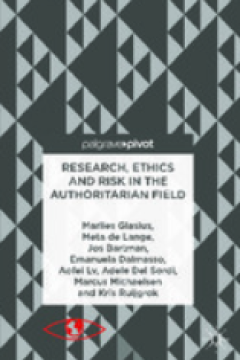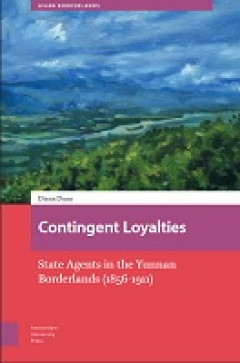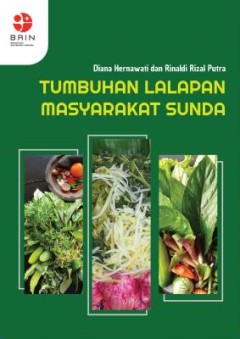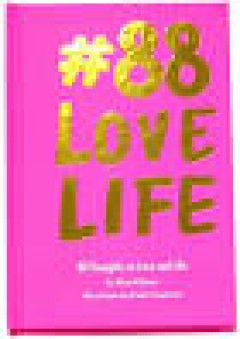Ditapis dengan

E-book Access to Social Justice Effective Remedies for Social Rights
Available open access digitally under CC-BY-NC-ND licence. This book proposes a conception of social justice according to international human rights law. Social rights include everyday rights such as housing, food, fuel and social security. Drawing on extensive research with frontline practitioners, the book frames access to social justice as a journey that should end with the realisation of an…
- Edisi
- -
- ISBN/ISSN
- 9781529237931
- Deskripsi Fisik
- 253 hlmn
- Judul Seri
- -
- No. Panggil
- 323.4 BOY a

E-book Culinary Heritage: Tracing, Shaping and Reshaping Food Culture from Th…
This anthology explores food and cultural heritage from various eras to show how food history helps us understand the past, present, and future. It provides new insight into local food cultures and focuses on the creative use of historical food culture for the future. The chapters cover new research on medieval food culture, starting with the Viking ship excavation at Gjellestad, which sheds li…
- Edisi
- -
- ISBN/ISSN
- 9788202839277
- Deskripsi Fisik
- 266 halaman, ilus.
- Judul Seri
- -
- No. Panggil
- 641.3 CAP c
E-book Islamic Sensory History: Volume 2: 600–1500
Islamic Sensory History, Volume 2: 600–1500 presents a selection of texts translated into English from Arabic and Persian. These selected texts all offer illustrative engagements with issues related to the sensorium in different times, places, and social milieus throughout the early and medieval history of Islamic societies. Each chapter is prefaced by an introductory essay by the translator,…
- Edisi
- -
- ISBN/ISSN
- 9789004515932
- Deskripsi Fisik
- 617 halaman, ilus.
- Judul Seri
- -
- No. Panggil
- 152 BUR i
E-book The Politics of Reproduction : Adoption, Abortion, and Surrogacy in th…
These three alarming vignettes might appear, on one level, to reflect quite dif-ferent concerns: abortion, surrogacy, and adoption. But a closer look reveals some deeper connections, and it is these deeper, more insidious connections that this collection of essays explores: the asymmetrically distributed privilege and precarity within which reproductive choices are made, the confluence of diffe…
- Edisi
- -
- ISBN/ISSN
- 9780814214152
- Deskripsi Fisik
- 269 hlm
- Judul Seri
- -
- No. Panggil
- 301 ASL t
E-book Adventures in Small Tourism : Studies and Stories
This book is the companion volume to 2021’s Creative Tourism in Smaller Communities: Place, Culture, and Local Representation, also published by the University of Calgary Press. That book offered a variety of authorial per-spectives on a central question: In what ways are creativity and place-based tourism co-engaged to aid sustainable cultural development in smaller com-…
- Edisi
- -
- ISBN/ISSN
- 9781773854786
- Deskripsi Fisik
- 319 hlm
- Judul Seri
- -
- No. Panggil
- 910.2 SCH a
Howl's Moving Castle
Sophie has the great misfortune of being the eldest of three daughters, destined to fail miserably should she ever leave home to seek her fate. But when she unwittingly attracts the ire of the Witch of the Waste, Sophie finds herself under a horrid spell that transforms her into an old lady. Her only chance at breaking it lies in the ever-moving castle in the hills: the Wizard Howl's castle. To…
- Edisi
- -
- ISBN/ISSN
- 0060298812
- Deskripsi Fisik
- 10,5 x 17 cm, 329 halaman
- Judul Seri
- -
- No. Panggil
- 823 JON h

E-book Research, Ethics and Risk in the Authoritarian Field
We wrote this book, in the first place, because we needed it and it did not exist. In 2014 we came to the discovery, as a comparative research group preparing for fieldwork, that there was practically no written guidance on how to handle the challenges of authoritarianism research. There were reams of literature on anthropological fieldwork, and some good texts on how to do researc…
- Edisi
- -
- ISBN/ISSN
- 9783319689661
- Deskripsi Fisik
- 130 hlm
- Judul Seri
- -
- No. Panggil
- 321.9 GLA r
E-book Medieval Welsh Medical Texts : The Recipes
The recipes that form the subject of this edition have been taken from four manuscripts: British Library Additional 14912 (BLAdd), Cardiff 3.242 (Hafod 16, Card), Oxford Bodleian Rawlinson B467 (Rawl), and Oxford Jesus College 111 (the Red Book of Hergest, RBH). All four manuscripts are roughly contemporary, all dating from the end of the fourteenth century or the beginning of the fifteenth.1 I…
- Edisi
- vol. 1
- ISBN/ISSN
- 9781786835499
- Deskripsi Fisik
- 625 hlm
- Judul Seri
- -
- No. Panggil
- 909.5 LUF m

E-book Contingent Loyalties: State Agents in the Yunnan Borderlands (1856-1911)
From the mid-nineteenth-century Hui rebellions, which challenged centralised state control, to the early-twentieth-century revolutions, which led to Yunnan’s decades-long independence, local actors shaped the history of Yunnan through their extensive cross-border networks and contradictory roles in the attempted state consolidation of this contested area. Among the local elites, the state age…
- Edisi
- -
- ISBN/ISSN
- 9789048558995
- Deskripsi Fisik
- 318 halaman
- Judul Seri
- -
- No. Panggil
- 950 DUA c
E-book Eyewitness Travel: Sardinia
- Edisi
- -
- ISBN/ISSN
- 9781465459947
- Deskripsi Fisik
- 226 halaman, ilus.
- Judul Seri
- -
- No. Panggil
- 910 GEO e
- Edisi
- -
- ISBN/ISSN
- 9781465459947
- Deskripsi Fisik
- 226 halaman, ilus.
- Judul Seri
- -
- No. Panggil
- 910 GEO e

E-Book Colours on East Asian Maps: Their Use and Materiality in China, Japan …
With a multi-perspective approach and transdisciplinary methods (humanities and sciences), this book offers an in-depth and systematic study of hand-drawn and hand-coloured maps from East Asia. Map colouring provides an insight into past societies, landscapes and territories. Colour is an important key to a more precise understanding of the map’s content, purposes and uses; moreover, colours …
- Edisi
- -
- ISBN/ISSN
- 9789004545625
- Deskripsi Fisik
- -
- Judul Seri
- -
- No. Panggil
- 912.09 LAN c
E-book The Land between Two Seas: Art on the Move in the Mediterranean and th…
It is then the rivers and the sea writ large that consti-tute the geographic template upon which this volume was developed. Why the Mediterranean? And why riv-ers? Taking up Fernand Braudel’s notion of a hinterland that is connected to the Mediterranean world, the vol-ume looks to the reverberations and echoes of this clas-sic site far beyond its shores and into the continent both North and E…
- Edisi
- -
- ISBN/ISSN
- 9789004515468
- Deskripsi Fisik
- 408 hlm
- Judul Seri
- -
- No. Panggil
- 709 BEL t
E-book Area-Wide Management of Fruit Fly Pests
The cuticle of insects has several functions, such as protecting against environmental conditions, pathogens, and other insects, as well as supporting the body. The epicuticle is the external layer of the cuticle and consists of two layers: the first one, composed of chitin, and the second one, composed of hydrocarbons, which helps the insect avoid dehy-dration and damage…
- Edisi
- -
- ISBN/ISSN
- 9780429355738
- Deskripsi Fisik
- 441 hlm
- Judul Seri
- -
- No. Panggil
- 632.9 ACE a

E-book Tumbuhan Lalapan Masyarakat Sunda
Pemanfaatan tumbuhan oleh manusia telah dilakukan sejak lama dan pengetahuan tentang cara memanfaatkan serta pengolahannya dilakukan secara turun temurun. Pemanfaatan tumbuhan dilakukan untuk berbagai keperluan, seperti untuk pengobatan, bahan pangan, keperluan sandang, membangun rumah, dan sebagainya. Pemanfaatan tersebut dilakukan semata-mata karena manusia menyadari bahwa tumbuhan memiliki p…
- Edisi
- Cet. 1
- ISBN/ISSN
- 9786238052172
- Deskripsi Fisik
- xvi hlm. + 212 hlm.; 14,8 × 21 cm
- Judul Seri
- -
- No. Panggil
- 641.35 HER t
E-book The Art of Parenting : Training Guide
The principle of investing in children rarely evokes controversy. However we look at it, to invest in a child is to invest in our common future: The world of tomorrow will inherit the children of today. Whether nations grow and prosper will depend heavily on the survival, health, education and protection of their citizens, particularly the youngest. There are several compelling reasons to inves…
- Edisi
- -
- ISBN/ISSN
- -
- Deskripsi Fisik
- 248 hlm
- Judul Seri
- -
- No. Panggil
- 649.1 NIC t

Delapan puluh delapan (#88) Kehidupan cinta : Pemikiran dalam cinta dan hidu…
This illustrated book is about the author's daily thoughts on her love and life experience. Uplifting, motivating, this book is essential to your daily #Whatsinsidemybag, so you will always feel inspired. Expect lots of good energy and beautiful illustrations inside this book.
- Edisi
- cet. 17
- ISBN/ISSN
- 9786026208200
- Deskripsi Fisik
- 128 pages; illus. 12 x 18 cm
- Judul Seri
- -
- No. Panggil
- 155.25 RIK d

Eighty-eight (88) Love life : 88 thoughts on love and life 02-passion
Consisting of 88 quotes and stories on love and life, this book offers a happy approach on overcoming sadness, failures, worries and changes in life – all written in a light and easy manner. Expect more good energy and more eye-pleasing illustrations that will brighten up your mind and day. The goal of this book? To make you smile
- Edisi
- cet. 7
- ISBN/ISSN
- 9786026208217
- Deskripsi Fisik
- 140 pgs; illus. 12 x 18 cm
- Judul Seri
- -
- No. Panggil
- 155.25 RIK e

Eighty eight (88) love life : 88 Thoughts on love and life 03-priorities
#88LoveLife has always beeb a delightful series that never fails to make its readers smile. In this third volume, the author takes us for a trip to reality where dreams and passion meet priorities, causing dilemmas and the need to make big adjustiments in life. Extremelly heartwarming and relevant to our daily struggles, this book will definitely change your perspective towards life. Not to fo…
- Edisi
- cet. 2
- ISBN/ISSN
- 9786024242923
- Deskripsi Fisik
- 144 pgs. illus. 12 x 18 cm
- Judul Seri
- -
- No. Panggil
- 155.25 RIK e

The world of Turner 1775-1851
Joseph Mallord William Turner was an English Romantic landscape painter. He also worked as a water-colorist, and print-maker. Considered a controversial figure in his day, he is now a highly regarded artist. His artistry elevated landscape painting to prominence.This volume celebrates his work.
- Edisi
- 4th edition
- ISBN/ISSN
- 9000658665
- Deskripsi Fisik
- 191 pgs. ;illus. 23 x 31 cm
- Judul Seri
- -
- No. Panggil
- 927 HIR t
 Karya Umum
Karya Umum  Filsafat
Filsafat  Agama
Agama  Ilmu-ilmu Sosial
Ilmu-ilmu Sosial  Bahasa
Bahasa  Ilmu-ilmu Murni
Ilmu-ilmu Murni  Ilmu-ilmu Terapan
Ilmu-ilmu Terapan  Kesenian, Hiburan, dan Olahraga
Kesenian, Hiburan, dan Olahraga  Kesusastraan
Kesusastraan  Geografi dan Sejarah
Geografi dan Sejarah